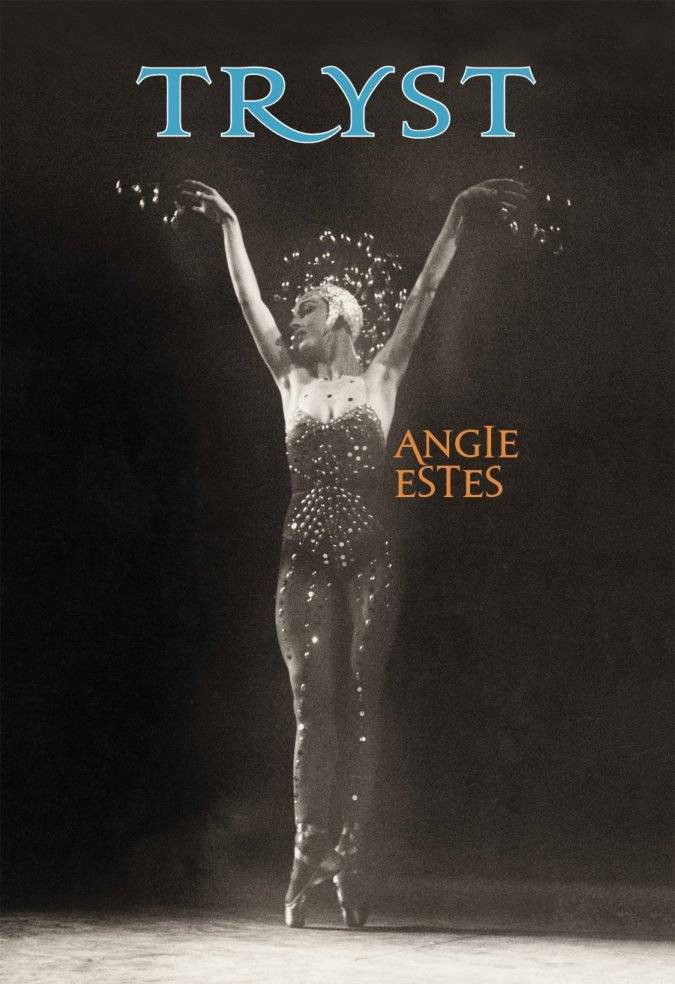Angie Estes
Carr Reading Series | Wednesday | 4:30 | Illini Union Bookstore Author’s Corner | Free
If you’ve never read anything Angie Estes has written, stop reading this nonsense and click here, right now.
 Back already? Well then go back and read it again, making sure this time to notice the subtle in-mixing of planned and unplanned speech, of narrative interjection and song driven reflection — read it again so you can see how the poet is both entranced and distracted by the language she uses so that we the reader cannot ignore her vision despite being unable to fully grasp its referents. Now read it again, this time letting it move you with its inadequacy — with its awareness of its inadequacy.
Back already? Well then go back and read it again, making sure this time to notice the subtle in-mixing of planned and unplanned speech, of narrative interjection and song driven reflection — read it again so you can see how the poet is both entranced and distracted by the language she uses so that we the reader cannot ignore her vision despite being unable to fully grasp its referents. Now read it again, this time letting it move you with its inadequacy — with its awareness of its inadequacy.
Okay, so I’ve outed myself as an Angie Estes fan, but my guess is that after seeing her read tomorrow, you too will share in my enthusiasm for her work. And, indeed, you won’t be alone. Estes’s work has garnered a great deal of recognition these past few decades. But honestly, the reason you should start reading (or re-reading) Estes’s work has nothing to do with the props she’s received and everything to do with the reason she’s recieved them: quite simply, she’s very good.
So go ahead and read on — meet Angie Estes. Then, go to her reading, and when you’re done, start reading her work in earnest, or start reading it again. Either way, you won’t be disappointed.
Smile Politely: First off, congratulations on Tryst. Can you talk a little bit about the image on the cover?
Angie Estes: Thanks, Caleb. When I saw this photograph, taken in 1956 at the opening of the Tony Duquette Studio, it seemed perfect for the cover of Tryst because it focused in one image so many of the book’s concerns: stars and constellations — literally and figuratively — and especially the poems’ interest in words and language as constellations of syntax that orbit or roam about us. The ballerina stands as if in the midst of a kind of apotheosis or “tryst” with whatever those “stars” may be — to the extent, in fact, that her fingertips and head have touched, are being drawn up by/to the “stars.” So in other words, the stars/constellation — along with the dancer who is inscribed with an image of her dancing, transforming self — become a way in the book to talk about our life in and with language. And of course, finally, the image is a very sensual, yielding one — made even more complex, via the mirror images of the dancer on the front and back covers — and love, whether sensual, spiritual, aesthetic, or erotic, is one of the abiding concerns throughout my work.
 Smile Politely: Your work seems to draw heavily upon public personas: Miles Davis, Peggy Guggenheim, and (of course) Gertrude Stein for example. Is it safe to say that you’re interested in celebrity, or does your attraction to these people have more to do with their aesthetic contributions?
Smile Politely: Your work seems to draw heavily upon public personas: Miles Davis, Peggy Guggenheim, and (of course) Gertrude Stein for example. Is it safe to say that you’re interested in celebrity, or does your attraction to these people have more to do with their aesthetic contributions?
Angie Estes: I don’t think it’s the celebrity status that draws me to these public personas, although of course if they were not celebrities I might well never have heard of them. Rather, it’s usually some detail or aspect of these people that’s generally unknown — or not considered of major importance — that finds its way into a poem, for example, Peggy Guggenheim’s transparent plastic dress or a photograph of Gertrude Stein dancing with her white poodle Basket in the countryside of France. And in this way, the images surrounding these lives take on the same resonance in the poems as any other objects or details or fragments of experience: they become springboards for entering those areas of human experience that are available to us only through art. As Mallarme says, “If we had a language which could express the truth, we’d have no need for poetry.”
Smile Politely: I must say that of your work I’m most familiar with Chez Nous which, if may be so bold to observe, has an uncanny awareness of the way meaning inhabits, not just the English language, but language in general. Are you multi-lingual, and if so, what influence does that have on your thinking?
Angie Estes: I wish I were multi-lingual — but alas. But you’re absolutely right that one of my poems’ continuing interests is in the way “meanings” inhabit, escape, proliferate in and by means of language. I think, though, that having an immense interest in languages while having no great proficiency in them has created great opportunities for experiencing the ways in which language shapes and slips between experiences.
Smile Politely: Do you think you were helped by studying English Literature instead of Creative Writing? Would you recommend that track for others?
Angie Estes: I think that studying anything is immensely important for writers. The teacher part of me says, ah, if only we had a kind of medieval craft guild for writing poems! One of the hardest things for apprentice writers to get is that it takes at least as long to learn what poems are and how to write them as it takes to learn what a chair is and how to craft a beautiful, useful one or as long as it takes to become a ballet dancer or a violinist or pianist. And it’s a never-ending process. So yes, I think that both an apprenticeship with a poet and the company of the like — minded can be extremely important for a write — as long as they’re not mistaken for the real work of a poet, which is mostly long and solitary.
I myself never went to an MFA writing program — or took part in writing workshops — so my own sense of how one becomes a poet is a very traditional, pre-writing program one: poets read and read, study the work of other writers, pay attention to the world, and write. And a very large part of me agrees with Mallarme when, in his essay “Art for All,” he says, “Whatever is sacred, whatever is to remain sacred, must be clothed in mystery.”
Smile Politely: While you studied Literature at Oregon, there were some pretty okay writers going through the MFA program. Any interesting/embarrassing stories to tell?
Angie Estes: Yes, there were definitely some “pretty okay” writers at Oregon — while I was working on my Ph.D. in American literature, before I went over to the dark side — and UIUC is very fortunate to have two of them here. Brigit Kelly, as you know, is such a powerful, moving poet, and — don’t tell him this, but — I can still remember drinking beer with Mike Madonick and being amazed at the poems he was writing. “Pretty okay,” indeed, for a guy who just basically fished and drank beer and voted for Ronald Reagan. After fishing with him, mostly in the dark and in the river all that time, I still mostly only recognize him from the waist up.
Smile Politely: As a visitor of Champaign-Urbana, what has your impression of the place been so far?
Angie Estes: I love it — Urbana, especially, feels like the lost homeland of the ‘60s. The community here is amazing. And I love my students; they’re so talented, articulate, engaged, and enthusiastic.








